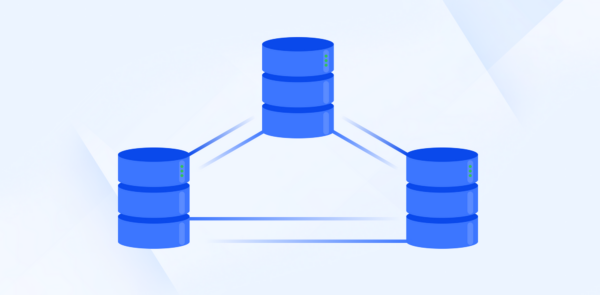Overview of Redundancy
Redundancy, in the context of networking and information technology, refers to the practice of incorporating duplicate components or systems within a network infrastructure to ensure reliability, fault tolerance, and continuity of operations. It is a fundamental principle employed to mitigate the risk of single points of failure and enhance the overall resilience of network systems.
Detailed Exploration of Redundancy
Redundancy is a critical aspect of network design and management, serving to minimize the impact of hardware failures, software glitches, or unforeseen disruptions on network performance and availability. By integrating redundant elements such as servers, switches, routers, and communication links, organizations can establish robust architectures capable of sustaining uninterrupted operations even in the face of adverse conditions.
Key Features of Redundancy
The key features of redundancy include:
- Fault Tolerance: Redundant components provide backup capabilities, allowing the network to continue functioning even if individual elements experience failures.
- High Availability: By distributing workload across redundant resources, redundancy helps maintain consistent access to network services and applications.
- Load Balancing: Redundant systems can be utilized to balance network traffic, optimizing resource utilization and enhancing performance.
- Automatic Failover: Redundancy mechanisms often incorporate automatic failover mechanisms that seamlessly redirect traffic to backup components in the event of failure.
- Scalability: Redundancy can facilitate scalability by accommodating increased demand through the deployment of additional redundant resources.
Types of Redundancy
Various types of redundancy exist, each serving specific purposes within network architecture. These include:
| Type of Redundancy | Description |
|---|---|
| Hardware Redundancy | Involves duplicating physical components such as servers, routers, and power supplies to ensure uninterrupted operation. |
| Network Redundancy | Utilizes multiple communication paths and alternate routing protocols to maintain connectivity in the event of link failures or congestion. |
| Data Redundancy | Involves replicating data across multiple storage devices or data centers to safeguard against data loss and corruption. |
| Power Redundancy | Incorporates backup power sources such as uninterruptible power supplies (UPS) and generators to prevent outages due to power failures. |
Ways to Use Redundancy
Redundancy can be leveraged in various ways across different industries and applications:
- Enterprise Networks: Organizations deploy redundancy to ensure continuous access to critical business applications, minimize downtime, and protect against revenue loss.
- Telecommunications: Service providers implement redundancy to maintain high-quality voice and data services, ensuring customer satisfaction and regulatory compliance.
- Cloud Computing: Redundancy is integral to cloud infrastructure, enabling providers to deliver scalable, resilient, and highly available services to clients worldwide.
- Disaster Recovery: Redundancy plays a vital role in disaster recovery strategies, enabling swift restoration of operations following natural disasters, cyberattacks, or other disruptive events.
Challenges and Solutions
Despite its benefits, implementing redundancy poses certain challenges, including:
- Cost: Building redundant infrastructure can be costly, requiring investments in additional hardware, software, and maintenance.
- Complexity: Managing redundant systems introduces complexity to network operations, necessitating robust monitoring, configuration, and troubleshooting mechanisms.
- Resource Utilization: Maintaining redundant resources consumes additional power, space, and bandwidth, potentially impacting overall resource utilization efficiency.
To address these challenges, organizations can adopt strategies such as:
- Prioritizing Critical Systems: Identifying and prioritizing critical systems and services can help allocate redundancy resources more effectively.
- Automation: Leveraging automation tools and scripts can streamline the deployment and management of redundant components, reducing operational overhead.
- Regular Testing: Conducting regular testing and simulations of failover scenarios can help validate the effectiveness of redundancy configurations and identify potential weaknesses.
- Cloud-Based Solutions: Leveraging cloud-based redundancy solutions can offer cost-effective alternatives to traditional on-premises redundancy architectures, providing scalability and flexibility without the need for significant capital investment.
Characteristics and Comparisons
| Characteristic | Redundancy | Similar Terms |
|---|---|---|
| Purpose | Enhance reliability and fault tolerance | High Availability, Fault Tolerance, Resilience |
| Implementation | Duplicate components or systems | Load Balancing, Failover, Disaster Recovery |
| Scope | Network infrastructure, data storage, power supply | Data Replication, Backup Systems, Parallel Computing |
| Impact | Minimize downtime, ensure continuity of operations | Improve Performance, Enhance Security |
Future Perspectives
As technology continues to evolve, the future of redundancy is likely to be shaped by emerging trends such as:
- Software-Defined Networking (SDN): SDN offers programmable and centralized network management, enabling dynamic allocation of redundancy resources based on real-time demand and traffic patterns.
- Edge Computing: The proliferation of edge computing devices and architectures necessitates resilient edge networks with built-in redundancy to support critical applications and services at the network edge.
- AI and Machine Learning: AI-driven analytics and predictive maintenance capabilities can enhance the effectiveness of redundancy by proactively identifying and mitigating potential failure points before they impact network performance.
VPN and Redundancy
Virtual Private Networks (VPNs) can complement redundancy strategies by providing secure and reliable connectivity for remote users and branch offices. By leveraging VPN technology, organizations can establish encrypted tunnels over redundant communication paths, ensuring confidentiality and integrity of data transmission while benefiting from the resilience and fault tolerance inherent in redundant network architectures.
Resources for Further Information
- Cisco: Understanding Redundancy in Networking
- TechTarget: Redundancy Strategies for Disaster Recovery
- Microsoft Docs: Designing Redundant Architectures
- Network World: The Importance of Network Redundancy
This comprehensive guide provides insights into the concept, implementation, challenges, and future prospects of redundancy in networking, offering valuable information for organizations seeking to enhance the resilience and reliability of their network infrastructure.


